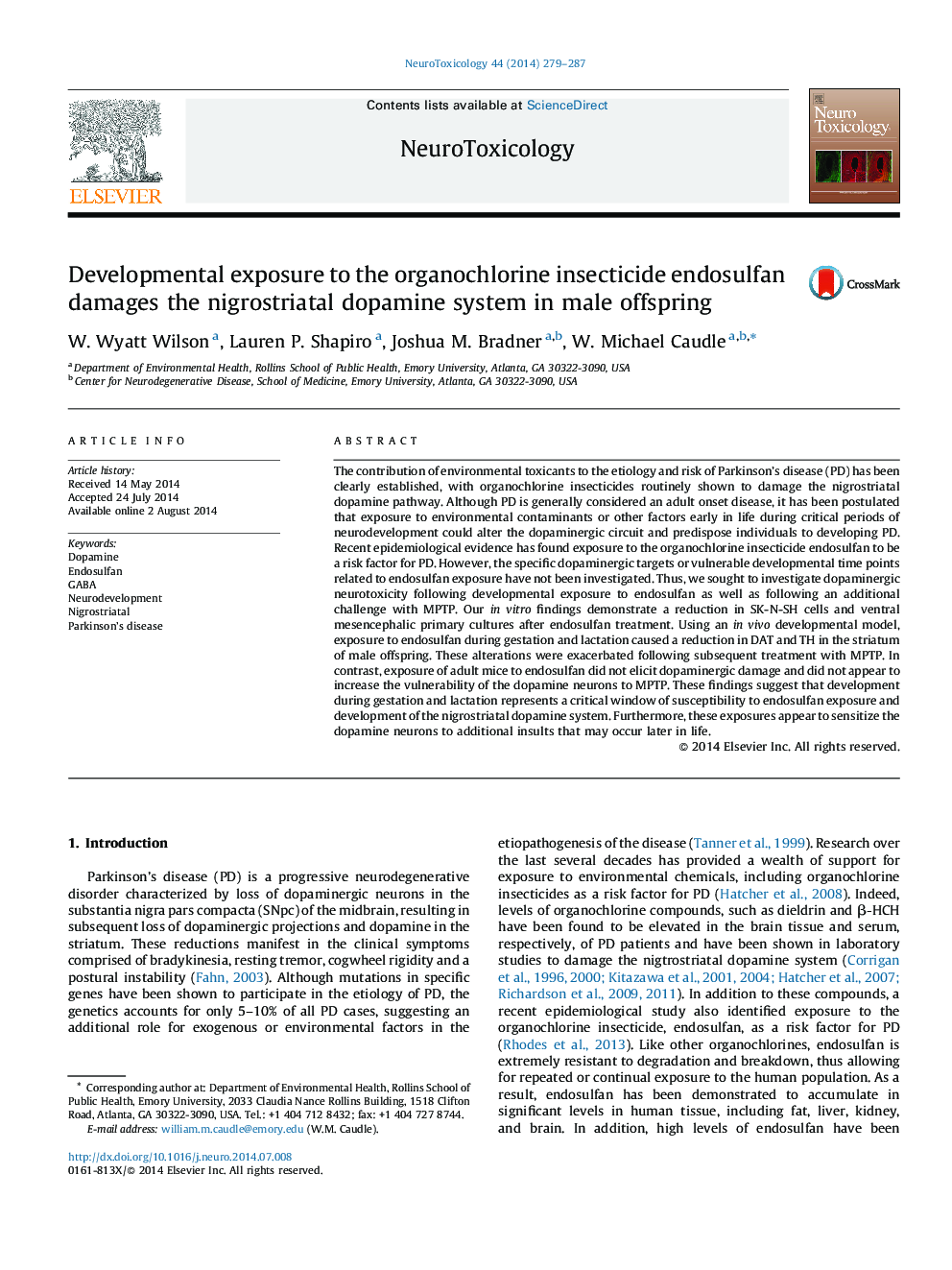| Article ID | Journal | Published Year | Pages | File Type |
|---|---|---|---|---|
| 2589682 | NeuroToxicology | 2014 | 9 Pages |
•Pesticide exposure during neurodevelopment contributes to Parkinson's disease.•Developmental exposure to endosulfan disrupts the nigrostriatal dopamine system.•Endosulfan causes vulnerability of dopamine neurons to further insults.•Adult exposure does not affect the nigrostriatal dopamine system.•Developmental exposure to toxicants may underlie future neurological deficits.
The contribution of environmental toxicants to the etiology and risk of Parkinson's disease (PD) has been clearly established, with organochlorine insecticides routinely shown to damage the nigrostriatal dopamine pathway. Although PD is generally considered an adult onset disease, it has been postulated that exposure to environmental contaminants or other factors early in life during critical periods of neurodevelopment could alter the dopaminergic circuit and predispose individuals to developing PD. Recent epidemiological evidence has found exposure to the organochlorine insecticide endosulfan to be a risk factor for PD. However, the specific dopaminergic targets or vulnerable developmental time points related to endosulfan exposure have not been investigated. Thus, we sought to investigate dopaminergic neurotoxicity following developmental exposure to endosulfan as well as following an additional challenge with MPTP. Our in vitro findings demonstrate a reduction in SK-N-SH cells and ventral mesencephalic primary cultures after endosulfan treatment. Using an in vivo developmental model, exposure to endosulfan during gestation and lactation caused a reduction in DAT and TH in the striatum of male offspring. These alterations were exacerbated following subsequent treatment with MPTP. In contrast, exposure of adult mice to endosulfan did not elicit dopaminergic damage and did not appear to increase the vulnerability of the dopamine neurons to MPTP. These findings suggest that development during gestation and lactation represents a critical window of susceptibility to endosulfan exposure and development of the nigrostriatal dopamine system. Furthermore, these exposures appear to sensitize the dopamine neurons to additional insults that may occur later in life.
